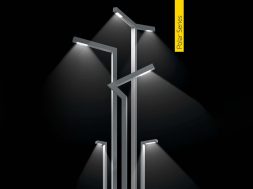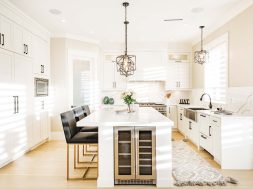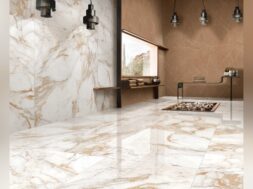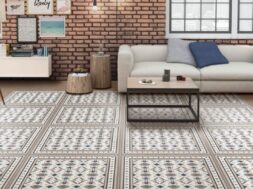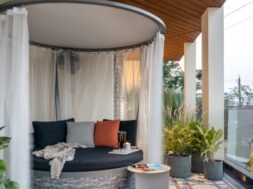Decorative glass: sustainability meets design goals
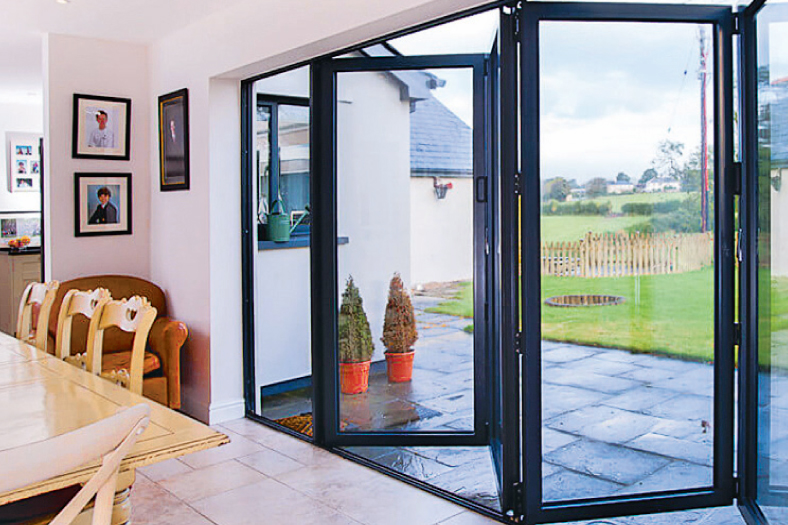
Focus on product development, innovation and technology will help keep up with rising demand for glass.
The use of decorative glass in building fenestration is constantly evolving as new technologies emerge and product demands change. With new trends each season, architects and designers are always seeking new and creative ways to incorporate decorative glass into projects keeping sustainable design approach as a focus. To keep up with the industry’s fast pace and occupant demand, it’s imperative for decorative glass manufacturers to focus on product development, innovation and technology to remain at the forefront of the industry.
Decorative glass not only creates privacy and adds texture and diffused light into any room, but is also easy to maintain, does not show fingerprints, has the unique ability to separate space while sharing light and adds decorative accents in residential, hospitality and commercial environments. In addition, decorative glass can be used as design detail or structural element in construction for interior and exterior applications.
Trends
Decorative glass trends are using the latest decorative glass techniques to meet the needs of customers specially the designs which promote buildings that enhance the physical and emotional well-being of occupants i.e. “designing for better health.”
70 to 75 per cent of architects and 60 to 70 per cent of building owners state that health considerations play a role in how their buildings are designed. “Some aspects that architects consider when designing health include: improving day lighting, reducing solar heat gain, and creating acoustical comfort, all of which can be accomplished with decorative glass, naturally this is in addition to incorporating decorative glass in interior applications like partitions, stairs, and walls, works to bring outside light deeper into the building and eliminates the barriers that drywall can create,“ says Ar. Er. S.P. Anchuri, Chief Consultant, ECBC Expert, Anchuri and Anchuri.
With a variety of weaves available, metal mesh can be used as part of an effective day lighting strategy. Whether used on a building façade, or as wall cladding, being passive method of shading devices laminated metal mesh is bringing the beauty of metal sheet perforation works into the decorative glass world.
Patterns
Use of patterns in decorative glass for fenestration is bringing sea change in design approach itself. Ornate patterns and bold prints are everywhere. Familiar patterns like plaid, hounds tooth, and gingham are on the rise, as are new favourites like tropical leaves and florals.
“Decorative glasses are used in modern fenestration with bold, high-resolution patterns and images on glass with digital ceramic printing process,” states Anchuri.
Digital ceramic printing is a technology that applies ceramic ink directly onto the surface of glass, like the way that an inkjet printer prints onto paper. Whether one wants to create a stunning accent wall, or a multi-panel graphic design, this solution can be used to achieve a wide range of design goals.
Decorative glass for fenestration can be designed and made in a variety of ways to give a wide choice of patterns, textures, colours and opacity. Decorative glass effects can be created on double glazing window panels by silvering, tinting, acid-etching or applying ceramic paints.
“The design can offer partial or total coverage, for improved aesthetics and privacy. Many decorative glasses can be thermally toughened or laminated for compliance with safety standards in NBC 2016. Decorative glass can be incorporated into double glazing window and combined with Low E and solar insulation double glazing window,” adds Anchuri.
Increased use of glass
“Glass has been used since 500 BC. Glass technology has advanced by leaps and bounds over the last few years. Use of glass has been considerably increased in the building sector over a period of time. Glass is available in a variety of thicknesses, colours and sizes,” says Ar. Surinder Bahga, Saakaar Foundation.
There are examples in Germany, Finland and HongKong, where solar photo voltaic glass panels are used for external cladding, balcony railings, louvers and even main glazing. People have started preferring large windows without grills due to advancement in glass technology and easy availability of glass in all nooks and corners of the county.
In today’s world, architects are talking about nano glass, self-cleaning glasses and switchable glass that can be made opaque by just putting off the switch.
Challenges
Every project needs a new production
Decorative glass in fenestration comes with some challenges – one of them may be due to a new bother for every new, completely unique product, since everything is custom, each new piece becomes a challenge because every project needs a new production consideration, says Anchuri.
Extensive use of glass
“Cost of glass is generally high. Extensive use of glass also invites security issues. The glass is also unsafe for earthquake prone areas. Glass needs a lot of maintenance in normal circumstances. Glass is non-biodegradable material, hence recycling and reuse should be promoted for a cleaner environment,” says Bahga. Moreover, hanging trolleys can be noticed on glass-clad high-rise towers which are permanently installed on such buildings just for cleaning purposes.
Rat race of overusing glass in each and every building irrespective of giving due considerations to local climate is a dangerous trend and it is a big challenge for all to save the environment. More glass clad buildings consume more electricity to air-condition them, he adds.
A beautiful element
Glass is an integral part of any building due to its pleasing aesthetics and functional advantages. Glass is a beautiful element which connects interior space to the outside environment. Studies have proven that the productivity of people working in the environmentally connected environment is more than those who are working in the enclosed environment.
In the times of modern architecture, glass has emerged as an integral part of green buildings as a sustainable material. Glass is the only material which provides see-through property and has structural strength. Sustainable architecture is a representative of best building practices; whether it’s in term of design or execution.
Factors to consider when selecting glass for windows
“A huge amount of energy savings can be achieved with the proper selection of glass. It also allows natural daylight inside the spaces which reduces the artificial lighting load drastically. Glass can be reused and recycled, reducing the need for virgin materials,” says Aditya Bhutani, COO, AIS Glasxperts.
To achieve the objective of comfort inside the space, designer has to consider various aspects like area of glazing on a particular orientation, type and configuration of glass, shading devices, performance values of the glass depending on type of building, location, and weather conditions.
Decorative glasses are used in modern fenestration with bold, high-resolution patterns and images on glass with digital ceramic printing process.
Ar. Er. S.P. Anchuri, Chief Consultant, ECBC Expert, Anchuri and Anchuri
Glass is non-biodegradable material, hence recycling and reuse should be promoted for a cleaner environment.
Ar. Surinder Bahga, Saakaar Foundation
A huge amount of energy savings can be achieved with the proper selection of glass.
Aditya Bhutani, COO, AIS Glasxperts
Cookie Consent
We use cookies to personalize your experience. By continuing to visit this website you agree to our Terms & Conditions, Privacy Policy and Cookie Policy.




